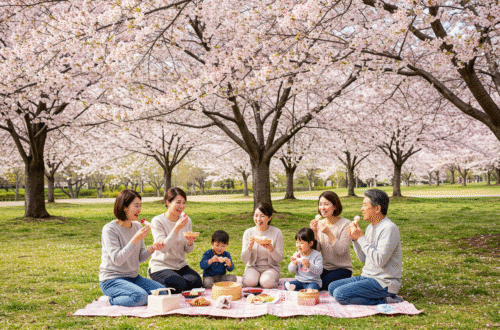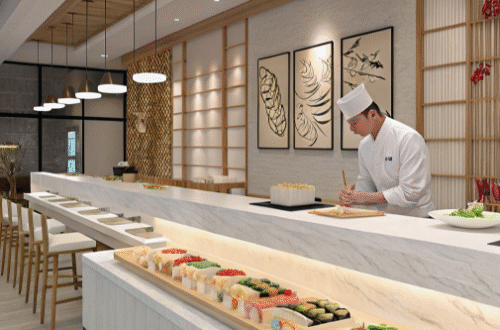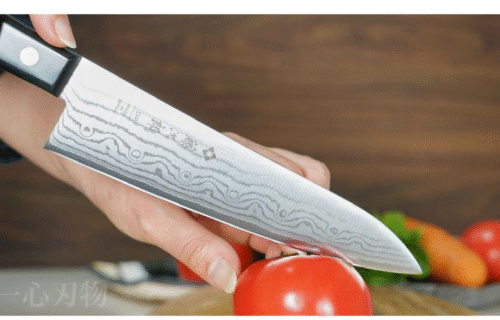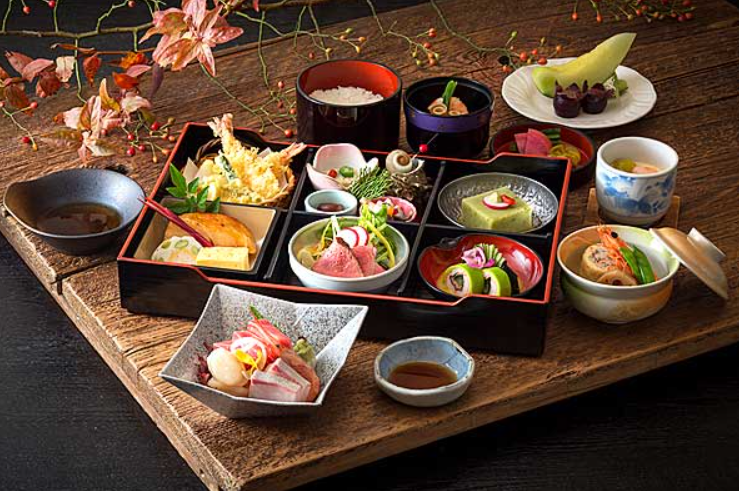
01-02. Japan’s Ultimate Foodie Trip Planner: When to Go, Where to Eat, and How Much to Budget for the Best Street Food
Welcome, future travelers to Japan and culinary adventurers.
If your goal is not just to see beautiful scenery, but to connect with the soul of a place, there is no better destination than Japan. And the most delicious and exciting way to discover the soul of Japan is undoubtedly through its food.
Sushi, ramen, tempura… of course, these are the kings of Japanese cuisine. However, the essence of Japanese food culture is not found solely in the quiet of high-end restaurants. It thrives in the steamy bustle of lively shopping streets, the chaos of festivals, and the small food stalls where the smiles and vitality of local people intersect.
That is the world of “Tabe-aruki” (food walking).
This article is not just a travel guide. It is an “adventure book” to help you experience the best of Japanese cuisine and create unforgettable memories. We will carefully unravel how to turn your culinary dreams into reality, step by step, including when, where, and on what budget.
So, grab your chopsticks (or fork) and embark on a journey to discover unknown delicacies.
Chapter 1: When is the best season for food? | A Seasonal Foodie Calendar
In Japan, there is a beautiful word called “shun.” It means the “best season” when ingredients are at their most delicious and nutritious. Japanese chefs value this “shun” above all else and express the changing seasons on a single plate. Knowing this “shun” is the first key to making your foodie journey the best it can be.
Spring (March–May): The Breath of Life and Cherry Blossom Flavors
After a long, harsh winter, Japan is enveloped in soft sunlight and hope. With the blooming of cherry blossoms, people’s hearts and appetites open up.
- Seasonal Stars: Strawberries (Ichigo), Bamboo Shoots (Takenoko), Cherry Shrimp (Sakura Ebi), First Tuna of the Season (Hatsugatsuo)
- Must-try street food:
- Hanami Dango: Food stalls are a common sight at cherry blossom viewing spots. These three-colored dumplings—pink, white, and green—are the very symbol of spring. Their chewy texture and gentle sweetness make them perfect for enjoying under the full bloom of cherry blossoms.
- Ichigo Ame: Japanese strawberries are surprisingly sweet and juicy. These sweets, made by coating bright red strawberries with crispy candy, are cute to look at and sure to be a hit on Instagram.
- Sakura Ebi Kakiage: These beautiful pink shrimp are only caught in Suruga Bay in Shizuoka Prefecture. When fried into crispy kakiage, the aroma and umami flavor of the shrimp spread throughout your mouth. Enjoying them fresh from the market in a port town is the best.
- Bamboo Shoot Charcoal Grill (Takenoko Sumibiyaki): In famous bamboo shoot producing areas such as the West Mountains of Kyoto, there are restaurants that simply grill freshly harvested bamboo shoots over charcoal. They have no bitterness and offer a unique texture and sweetness.
Summer (June to August): The excitement of festivals and refreshing gourmet food
Japanese summers are hot and humid, but that’s part of the fun. Summer festivals, fireworks displays, and delicious foods that cool you down make this season special.
- Seasonal stars: eel (unagi), sweetfish (ayu), edamame, corn (tomorokoshi), watermelon (suika)
- Must-Try Street Food:
- Shaved Ice (Kakigori): Japanese shaved ice is not just a block of ice topped with syrup. It is an art form, with fluffy, snow-like ice topped with matcha, fruit, condensed milk, and other toppings. Especially shaved ice made with natural ice has a gentle melt-in-your-mouth texture that doesn’t give you a headache. It’s worth the wait, even if you have to stand in line.
- Yaki Tomorokoshi (Grilled Corn): A summer festival staple. Once you catch the aroma of soy sauce wafting through the air, you can’t resist. Japan’s sweet and juicy corn is a true delicacy.
- Hiyashi Kyuri (Chilled Cucumber): A simple snack made by chilling a whole cucumber in ice water and eating it with salt or miso. It provides a surprising sense of coolness to a body heated by the summer sun.
- Ayu no Shioyaki (Grilled Sweetfish): Sweetfish, known as the queen of clear streams. At riverside tourist spots, Sweetfish are skewered and slowly grilled over charcoal. Biting into it wildly allows you to enjoy the slightly bitter taste of the innards, a flavor for adults.
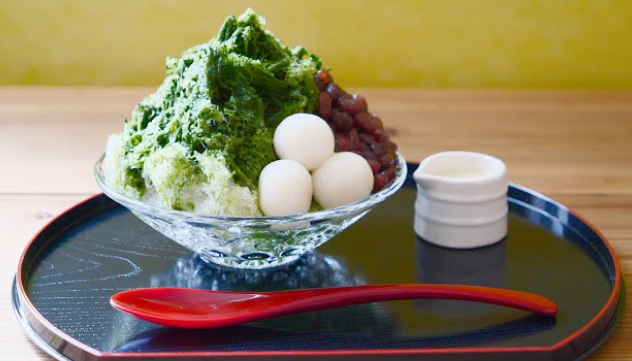
Autumn (September to November): Autumn appetite and abundant harvest festival
Autumn, when the weather becomes mild and comfortable, is called “autumn appetite.” It is the best season for foodies, as the mountains and seas are full of delicious foods and the whole country is overflowing with delicious foods.
- Seasonal stars: Sanma (Pacific saury), Kuri (chestnuts), Satsumaimo (sweet potatoes), Matsutake (matsutake mushrooms), Kaki (persimmons)
- Must-try street food:
- Sanma no Shioyaki (grilled Pacific saury): The king of autumn flavors. Pacific saury grilled over charcoal is a staple of Japanese home cooking. In Meguro, Tokyo, there is even a “Sanma Festival” where grilled Sanma is served for free.
- Yakiguri: Large chestnuts roasted under pressure using a special machine. The fluffy texture and natural sweetness are irresistible once you start eating them. They are often found at the entrances of tourist spots.
- Daigaku Imo: Sweet potato cut into irregular pieces, fried, and coated with sweet syrup. The outside is crispy, and the inside is fluffy. The flavor of black sesame seeds adds a nice accent. Look for it in old towns such as Asakusa and Kawagoe.
- Gohei Mochi: A local dish from the mountainous regions of the Chubu region. Cooked rice is mashed, skewered, and grilled with a miso or soy sauce-based sauce. It’s the perfect snack when you’re feeling a little hungry.
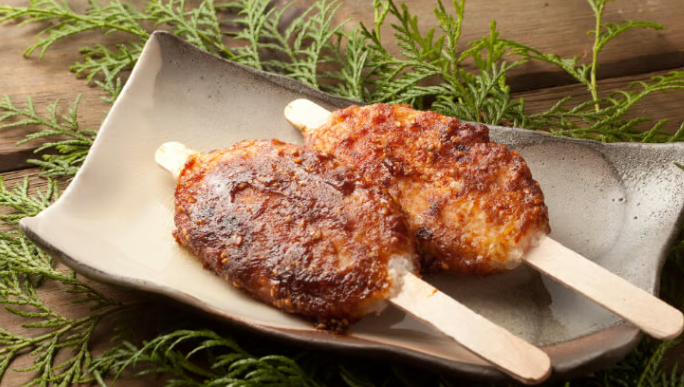
Winter (December to February): Warm flavors that penetrate your frozen body
Winter is a season of beautiful snowy landscapes. It is in the cold that we truly appreciate the warmth and gratitude of food. This season is all about gourmet foods that warm the body from the core.
- Seasonal highlights: Crab (Kani), Oysters (Kaki), Amberjack (Buri), Oden (Oden), Mandarins (Mikan)
- Must-try street food:
- Oden: A dish made by simmering daikon radish, eggs, and fish cakes in broth. Even the oden available at convenience stores is surprisingly high-quality, but the oden served at specialty shops in Kanazawa and Shizuoka is truly exceptional. The hot, broth-soaked daikon radish is a true winter delicacy.
- Yaki Gaki (Grilled Oysters): In oyster-producing areas such as Miyajima in Hiroshima and Toba in Mie, you can enjoy oysters grilled in their shells. Squeeze a little lemon juice on the plump flesh and pop it into your mouth to experience the melt-in-your-mouth goodness of the “milk of the sea.”
- Kani Jiru (Crab Soup): A must-try when visiting markets in Hokkaido or along the Sea of Japan. This miso soup, rich with the umami of crab, instantly warms your frozen body. It’s a luxury you can enjoy for just a few hundred yen.
- Chinese buns (Chukaman): The hot steamers next to the cash register at convenience stores are a winter staple. With a variety of options like meat buns, red bean paste buns, and pizza buns, you can enjoy a warm, comforting treat for just over 100 yen.
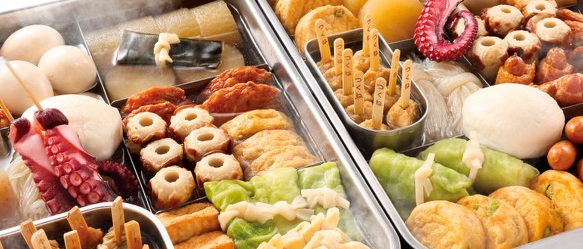
Chapter 2: Where are the holy places of gluttony? | Japan’s Top Street Food Destinations
There are many cities in Japan that are worth traveling to just for the sake of eating. Here, we introduce the “holy places of gluttony” that you absolutely cannot miss, along with the unique charms of each area.
Osaka – The Nation’s Kitchen
Osaka is the city where the term “foodie paradise” was born. Cheap, delicious, and energetic, Osaka’s food culture is truly entertainment.
- Dotonbori: Osaka’s most famous area, lined with giant three-dimensional signs of crabs and octopuses.
- Takoyaki: Osaka’s soul food. Crispy on the outside, creamy on the inside. The harmony of sauce, mayonnaise, green onions, and bonito flakes is irresistible. Famous restaurants are great, but small local shops frequented by locals are also worth checking out. Each shop has its own unique flavor, so enjoy comparing them (Tabekurabe).
- Okonomiyaki: A dish made by mixing cabbage, meat, seafood, and other ingredients into a wheat flour batter and grilling it. Many restaurants cook it right in front of you on a hot plate, adding to the dining experience.
- Kushikatsu: Meat and vegetables skewered and deep-fried. The Shinsekai area is particularly famous for this dish. Be sure to follow the rule of “no double dipping!” This rule is based on hygiene reasons, as the sauce is shared, and also reflects the Japanese culture of sharing and enjoying food together.
- Kuromon Market: A market where local professional chefs come to buy ingredients.
- Fresh seafood: Enjoy freshly grilled scallops with butter and soy sauce, uni, and grilled tuna skewers, among other fresh seafood delicacies.
- Fruit: Don’t miss the surprisingly sweet Japanese fruit. Especially the white strawberries from winter to spring are a must-try.
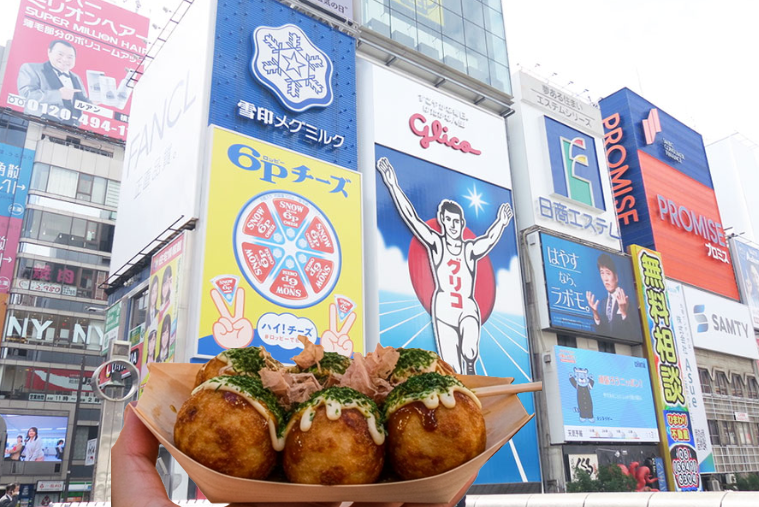
Tokyo – Where Tradition Meets Trend A Mix of Traditional and Trendy
Tokyo, the capital of Japan, is a trendsetter in food while also preserving traditional flavors that have been passed down since the Edo period.
- Tsukiji Outer Market: Even after the market moved to Toyosu, it remains a food theme park bustling with food professionals and tourists.
- Tamagoyaki: A fluffy, sweet Japanese omelet with a rich dashi broth flavor. It’s popular to eat it on a skewer while walking around. The sweetness and texture vary by store, so it’s fun to try different ones.
- Seafood Skewers: Skewers of tuna, salmon, eel, and other seafood grilled over charcoal. The aromatic scent is irresistible.
- Asakusa: Nakamise Street, which leads to Sensoji Temple, is a treasure trove of traditional Japanese sweets.
- Age Manju: Manju fried like tempura. Crispy on the outside and hot red bean paste on the inside.
- Kibi Dango: Small dumplings coated with kinako (roasted soybean flour). Simple and gentle taste.
- Harajuku: Takeshita Street is the birthplace of Japan’s youth culture, “kawaii.” The food here is colorful and unique.
- Crepes: Japanese crepes filled with whipped cream, fruit, and ice cream are now considered an art form.
- Rainbow Food: Rainbow-colored cotton candy, cheese dogs, and other visually striking foods continue to be created.
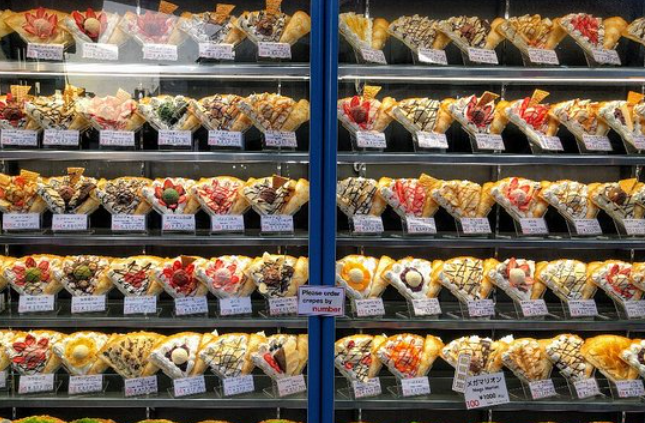
Kyoto – Refined Flavors of an Ancient Capital
Kyoto has been the capital of Japan for over 1,000 years, and its food culture is also highly refined. Let’s take a peek into the “kitchen of Kyoto.”
- Nishiki Market: A market with 400 years of history. Over 100 shops line both sides of the narrow alleyways.
- Dashimaki Tamago: A dish that encapsulates the culture of “dashi,” the essence of Kyoto. The fluffy texture and the rich umami flavor of the dashi spreading throughout are truly remarkable.
- Yuba: A membrane formed when soy milk is heated. Enjoy it as sashimi or fried for a healthy and elegant taste.
- Matcha Sweets: As the birthplace of matcha, Kyoto offers a variety of high-quality matcha sweets, including rich matcha soft serve ice cream, warabi mochi, and tiramisu.
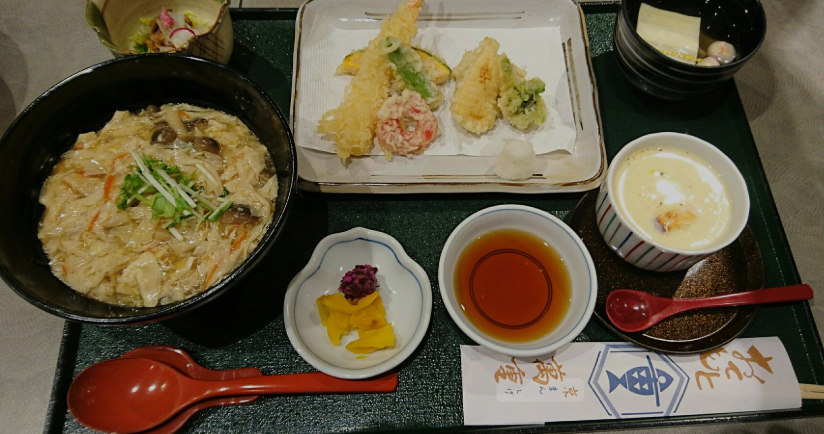
Fukuoka – Yatai Paradise
If you want to enjoy a meal while interacting with the locals, Fukuoka is the perfect place.
- Yatai in Nakasu & Tenjin: In the evening, about 100 yatai appear along the river and main streets.
- Hakata Ramen: Known for its rich pork bone broth and thin noodles. Eating ramen at a yatai is a unique experience thanks to the atmosphere. Why not try “barikata,” where you can choose the firmness of the noodles?
- Yakitori & Oden: Enjoy with beer or sake. You might even strike up a conversation with the locals sitting next to you. That’s the charm of yatai.
- Food stall etiquette: Popular stalls will have lines. It’s smart to hop around to different stalls instead of lingering too long at one.
Chapter 3: How Much Should You Budget for a Foodie Adventure?
You may have the impression that Japan is expensive, but when it comes to eating out, you can enjoy yourself at surprisingly reasonable prices. With careful planning, it is possible to eat your fill while staying within your budget.
- Price Range for Eating Out
- Snacks: ¥300 – ¥800
- Examples: Takoyaki (6 pieces) ¥500, Dango (1 piece) ¥150, Croquette ¥200, Crepe ¥600
- Light Meals: ¥800 – ¥2,000
- Examples: Seafood Donburi at the Market ¥1,500, Ramen ¥900, Okonomiyaki ¥1,200
- Snacks: ¥300 – ¥800
Model Plan for Daily Food Expenses
We propose three model plans to suit your travel style.
- 【Budget Traveler】¥3,000–¥4,000 per day
- Breakfast: Convenience store rice ball (¥150) and coffee (¥120)
- Lunch: Croquette (¥200), meat cutlet (¥250), and takoyaki (¥500) at a shopping street
- Dinner: Standing soba/udon noodles (¥500) or gyudon chain (¥500) or street stall ramen (¥800)
- Drinks: Tea purchased at a supermarket (¥100)
- Key points: The key is to make smart use of convenience stores and supermarkets. Japanese convenience store food is among the best in the world!
- 【Standard Plan / Standard Traveler】¥5,000–¥8,000 per day
- Breakfast: Tamagoyaki (¥150) and seafood skewers (¥500) at Tsukiji Market, coffee (¥500) at a coffee shop
- Lunch: Dashimaki tamago (¥400), yuba donuts (¥300), and small seafood donburi (¥1,000) at Nishiki Market in Kyoto
- Dinner: Kushikatsu (5 pieces for ¥1,000) and okonomiyaki (¥1,200) in Osaka, beer (¥500)
- Key points: A plan that allows you to eat whatever you want, with a clear distinction between lunch and dinner.
- 【Luxury Plan / Foodie Splurge】¥10,000 per day
- Breakfast: Fresh uni donburi (¥3,000) at the market
- Lunch: Visit multiple food spots and try everything that catches your eye (¥4,000~)
- Dinner: Enjoy a variety of dishes with local sake at a popular izakaya (¥5,000~)
- Key points: A plan that pursues the ultimate dining experience without worrying about price.
Smart Money-Saving Tips
- Head to the Depachika: The food hall in the basement of department stores is a treasure trove of high-quality prepared foods. Discount sales start just before closing time, so it’s a great chance to get a fancy dinner at a bargain price.
- Bring Your Own Drinks: Vending machines are convenient, but you can get drinks even cheaper at supermarkets. Bringing your own bottle is also a good idea.
- Lunch Sets: Many restaurants offer lunch sets that are more affordable than dinner. Enjoying a hearty meal during the day is another option.
Conclusion: Let’s go on your own food adventure | Your Food Adventure Awaits
Eating your way through Japan is not just about filling your stomach.
It is the ultimate form of communication, allowing you to experience the seasons with all five senses, touch the history and culture of the land, feel the passion of the creators, and connect with the local people.
A single skewer of yakitori or a bowl of crab soup has the power to transform your trip into an unforgettable experience. The bustling energy of Dotonbori, the vibrant atmosphere of Nishiki Market, the warmth of Fukuoka’s street food stalls—all of these will add color to your adventure.
With this guide in hand, create your own ultimate foodie itinerary. And savor every delicious, profound moment of this wonderful country to your heart’s content.
May your journey be filled with endless “Oishii!” moments.
Thank you for the meal!

